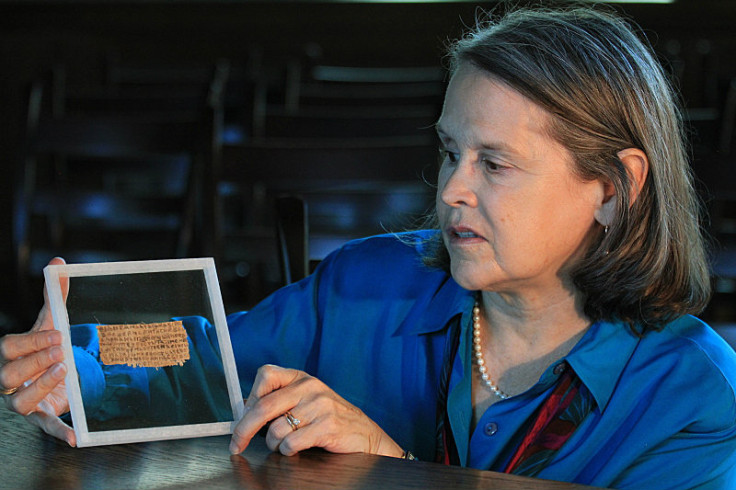Gospel of Jesus' Wife: Ink on controversial ancient scroll dates back 1,200 years

New research on the papyrus' ink is a step closer to proving it's authenticity say researchers. Analysis of the papyrus published in the Harvard Theological Review journal, suggested the 'Gospel of Jesus' Wife' papyrus dates back around 1,200 years, while the ink is of a type that could have been created at that time.
Researchers at Columbia University are running new tests on the ink used on the papyrus. Initial tests published by the Columbia University team in 2014 indicated the ink could have been made in ancient times. The results of the investigation by Columbia are still ongoing and yet to be published.
According to their research so far: "The ink used in this manuscript is primarily based on a carbon black pigment such as Lamp Black. The observed Raman spectra [used to characterise the chemical composition of a substance] are very similar to the carbon-based inks studied for a wide variety of manuscripts including several dated from the early centuries of the Christian era."
What has convinced experts that it is probably genuine was the fading of the ink on the papyrus fibres, and traces of ink adhered to the bent fibres at the torn edges.

Harvard University professor Karen King reported her discovery of the papyrus in September 2012. It purports to be the 'Gospel of Jesus's Wife,' suggesting that Jesus was married to Mary Magdalene. King tentatively dated the papyrus to the fourth century, saying it could be a copy of a gospel written in the second century in Greek.
"This fragment suggests that some early Christians had a tradition that Jesus was married," she said in a New York Times interview. "There was, we already know, a controversy in the second century over whether Jesus was married, caught up with a debate about whether Christians should marry and have sex."
The fragile papyrus fragment is about the size of a business card, with eight lines on one side, in black ink, just about legible under a magnifying glass. It was written in Coptic, an Egyptian language that uses Greek characters — specifically, in Sahidic Coptic, a dialect from southern Egypt, said AnneMarie Luijendijk, an associate professor of religion at Princeton University.
The provenance of the papyrus fragment is a mystery, and its owner has asked to remain anonymous, according to a LiveScience report. There have been claims that the papyrus is a fake although Dr. Luijendijk was adamant that "it would be impossible to forge."
Roger Bagnall, director of the Institute for the Study of the Ancient World, at New York University said: "It's hard to construct a scenario that is at all plausible in which somebody fakes something like this. The world is not really crawling with crooked papyrologists,"
What the ancient Egyptian papyrus says
The eight lines of text, which are cut off at both ends, have been translated by King and other Coptic experts as follows:
1) ... not [to] me, my mother gave to me li[fe] ...
2) The disciples said to Jesus, "...
3) ... deny. Mary is worthy of it ... (or, alternatively, Mary is not worth of it ...)
4) ..." Jesus said to them, "My wife ...
5) ... she will be able to be my disciple ...
6) Let wicked people swell up ...
7) As for me, I dwell with her in order to ...
8) ... an image ...
© Copyright IBTimes 2024. All rights reserved.






